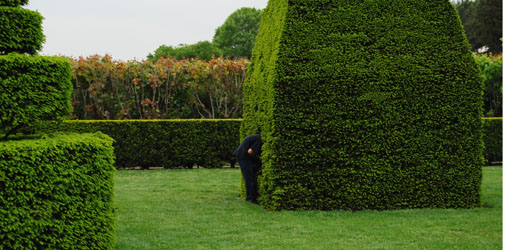Aspect Switching
Posted on January 19, 2010 | posted by:
Aspect switching is a perceptual phenomenon that we encounter whenever the distinction between a figure and a ground is confused or ambiguous. The most familiar example is the Rubin vase, the black and white optical puzzle that sometimes seems to be a vase and sometimes two opposing faces. During a meeting with a potential applicant recently, she raised the following question: how will students be assessed if they’re working in teams? While I first thought this was simply a question about grading, it then dawned on me that she was asking a much more sophisticated question. She wanted to know how a student in the TransDesign program will determine if she’s making progress toward her learning goals when she is frequently working in collaborative teams? What it made me realize is that we really need to rethink how we document collaborative projects so that all team members can assess whether they themselves are making the progress they’d like to see. If collaborative projects become the new norm, how will students and faculty and professionals showcase “their” work when it is consistently woven together with the work of others?
There’s no doubt in my mind that we are moving away from the model of the heroic individual designer and toward a continuously collaborative and connective model of design practice. The traditional design portfolio is a well-established medium for showcasing a single designer’s work. But a solitary designer does not really have the resources to throw at situations that are densely complex and intertwingled (to borrow Ted Nelson’s famous neologism). For that, we need constantly shifting, agile teams that bring together contrasting perspectives, complementary skill sets, and different ways of working.
So how would someone with a rich history of collaborative projects showcase his own, unique contribution? How will design educators who focus on a model of collaborative team projects adequately assess whether a student is thriving, or even learning? What is clear to me is that we will quickly be seeing new modes of documenting work and novel techniques for shifting one’s focus between the figure of the individual and the ground of the team. Maintaining an unstable figure/ground relationship may be the optimal model for presenting one’s own work constantly in the context of others.